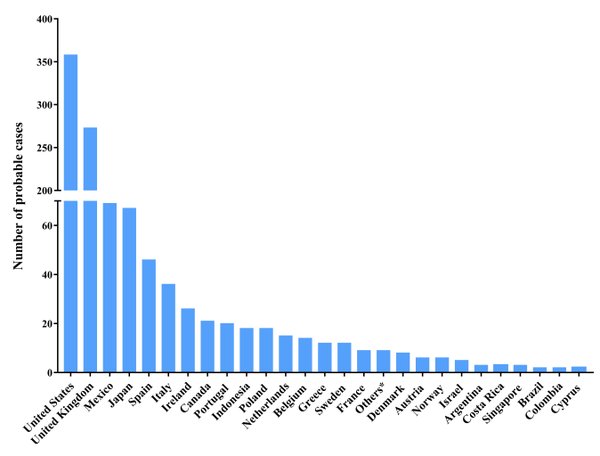-
Home
-
About JCTR
-
Gold Open Access
-
Issues
-
Editorial board
-
Author guidelines
-
Publication fees
-
Online first
-
Special issues
-
News
-
Publication ethics
-
Partners
-
Submit your manuscript
-
Submit your review report
-
Editorial Office
-

This work is licensed under a Creative Commons Attribution-NonCommercial 4.0 International License. ISSN print: 2382-6533 ISSN online: 2424-810X
Volume 8 Issue 6
Current knowledge about the outbreak of acute severe hepatitis of unknown origin among children
Li-Xin Pan, Guan-Yu Wang, Jian-Hong Zhong*, Xiao-Hui Fan*
Pan et al, J Clin Transl Res 2022; 8(6):5
Published online: October 31, 2022
Abstract
Background: A recent outbreak of acute severe hepatitis of unknown aetiology (ASHep-UA) among children 16 years old and younger has aroused global concern. Initially reported in central Scotland, the disease has been notified in 35 countries and linked to 22 deaths as of 25 September 2022.
Aim: This review aimed to provide current knowledge about the outbreak of ASHep-UA.
Methods and Results: The websites of the World Health Organization, the UK Health Security Agency, the European Centre for Disease Prevention and Control, the Centers for Disease Control and Prevention, and the PubMed database were searched, based on the search term “acute severe hepatitis of unknown aetiology”. The corresponding reports or literature previously released by the mentioned websites and database were integrated to obtain current information about ASHep-UA.
Conclusion: Even though the potential relevance between ASHep-UA and adenovirus, adeno-associated virus 2, and human herpes viruses was revealed, the aetiology of ASHep-UA is still unknown. More effort should be made to explore whether ASHep-UA is caused by a novel virus or other environmental factors, to generate appropriate treatment strategies
Relevance to patients: ASHep-UA has aroused global concern recently, which may lead to adverse outcomes like liver transplants and death. The present review shares current development and information about the outbreak of acute severe hepatitis of unknown origin among children.

DOI: http://dx.doi.org/10.18053/jctres.08.202206.005
Author affiliation
1. Hepatobiliary Surgery Department, Guangxi Medical University Cancer Hospital, Nanning, China
2. Center for Genomics and Personalized Medicine, Guangxi Key Laboratory for Genomics and Personalized Medicine, Guangxi Collaborative Innovation Center for Genomics and Personalized Medicine, Guangxi Medical University, Nanning, China
3. Department of Microbiology, School of Preclinical Medicine, Guangxi Medical University, Nanning, China
4. Guangxi Key Laboratory for Early Prevention and Treatment of Regional High Frequency Tumors, Guangxi Medical University, Nanning, China
*Corresponding authors
Jian-Hong Zhong
Guangxi Medical University Cancer Hospital, He Di Rd. #71, Nanning 530021, P.R. China,
Tel: +86-771-5330855
Fax: +86-771-5312000
Email: zhongjianhong@gxmu.edu.cn
Xiao-Hui Fan
School of Preclinical Medicine, Guangxi Medical University
Email: fanxiaohui63@163.com
Handling editor:
Michal Heger
Department of Pharmaceutics, Utrecht University, the Netherlands
Department of Pharmaceutics, Jiaxing University Medical College, Zhejiang, China

